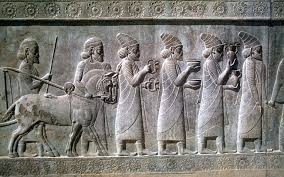Iconic Mystery of the Ancient World
The Sphinx, with its lion’s body and human head, is one of the most enigmatic figures of ancient mythology. Appearing in both Egyptian and Greek traditions, the Sphinx embodies mystery, wisdom, and power. Its symbolism has fascinated generations of historians, archaeologists, and travelers.
Origins in Egyptian Mythology
In Egypt, the Great Sphinx of Giza is believed to represent Pharaoh Khafre, serving as a guardian of sacred spaces. It combines strength (lion) and intelligence (human) to protect temples and tombs. Carved from a single limestone ridge, the Sphinx demonstrates the engineering prowess of the Old Kingdom, with its scale and precision continuing to impress modern scholars.
Greek Adaptations and the Riddle
In Greek mythology, the Sphinx became a creature of terror and challenge, famously presenting riddles to travelers, such as the tale of Oedipus. Failure to solve these riddles often meant death, emphasizing the importance of intelligence and wit. The Greek Sphinx differs from the Egyptian version in its role as a moral and intellectual test rather than a guardian.
Archaeological Discoveries and Research
Over centuries, the Sphinx has been the subject of extensive research, revealing insights into ancient construction methods, religious symbolism, and erosion patterns. Excavations around the Giza Plateau continue to shed light on its original appearance, purpose, and cultural context.
Symbolism and Cultural Impact
The Sphinx remains a symbol of mystery, wisdom, and human curiosity. It connects two ancient civilizations through shared motifs of power, intellect, and divine protection. Its presence in art, literature, and popular culture ensures that it continues to inspire wonder and exploration.
Conclusion
The Sphinx embodies the enduring human fascination with riddles, guardianship, and the unknown. Across Egyptian and Greek traditions, it serves as a bridge between strength and intellect, past and present, mystery and knowledge, preserving its place as one of the world’s most iconic mythological figures.






